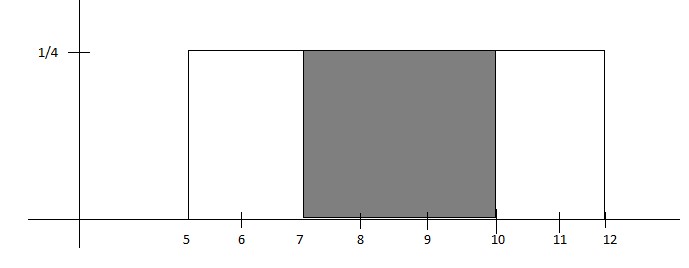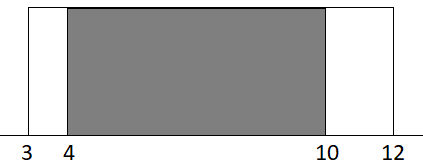Working With Rectangles
- Page ID
- 29773
Area of a Rectangle
The area of any rectangle with length \(b\) and height \(h\) is given by \(Area = b \times h\).
Example
If a rectangle has a length of 4 and a height of \(\frac{1}{4}\) , then its area is given by \(Area = 4 \times \frac{1}{4}\).

Example
In the figure below, the area of the shaded region is given by
\(Area = (10 - 7)\times \frac{1}{4} = 3\times \frac{1}{4} = \frac{3}{4}\)

Example:
If the area of the rectangle starting at 3 and ending at 12 is known to be 1, then it is possible to find both the height of the rectangle and then the area of the smaller shaded rectangle.

Since the length of the bigger rectangle is \(12 - 3 = 9\), then the height is given by
\(Area \div length = \frac{1}{9}\)
Knowing the height, we can find the area of the smaller shaded rectangle by multiplying the length of its base by its height. This area is
\(A = (10 - 4)\times \frac{1}{9} = \frac{6}{9} = \frac{2}{3}\) .


